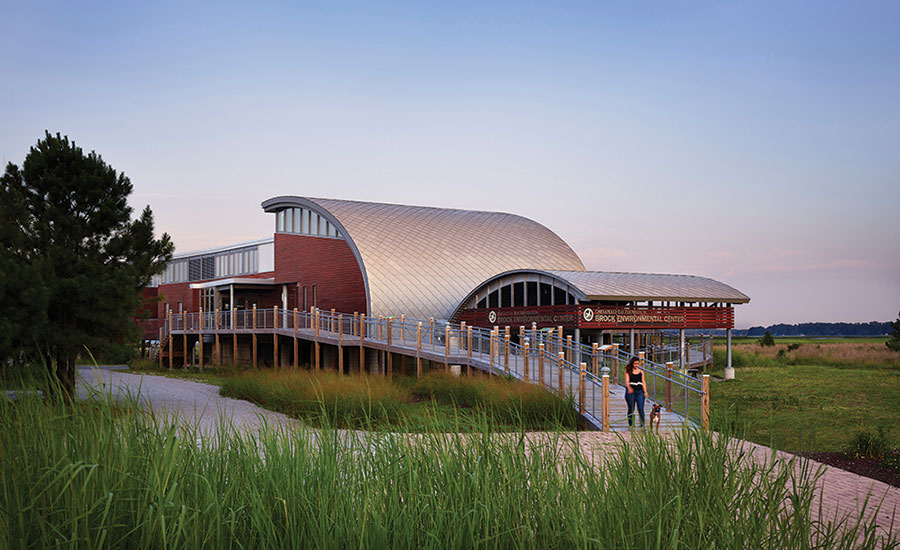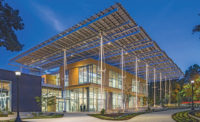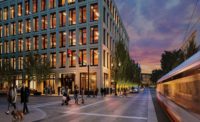Creating a "Poster Building" for Leading-Edge Sustainability

Chesapeake Bay Foundation building, which was finished in late 2014, produces 83% more power than it uses.
PHOTO: PRAKASH PATEL COURTESY SMITHGROUPJJR
 Greg Mella
Greg Mella
Washington, D.C.
ENR 5/30-6/6/16 p. 12
Leading the design team for the first U.S. commercial building permitted to turn rain into drinking water.
On Aug. 7, 2014, architect Greg Mella, who led the design team for the supersustainable Brock Environmental Center, in Virginia Beach, Va., got hit by a car while he was bicycling home from work in Washington, D.C. The impact, which shattered his right tibial plateau and tore his rotator cuff, occurred about four months before completion of the 10,000-sq-ft Brock center, which is the first commercial building in the U.S. to be permitted to treat rainwater to potable standards.
Mella was on disability for six months and in physical therapy for a year. But he kept working on Brock. He used Skype and his cellphone’s dictation feature to stay in contact with the team. In November, he went to the site. “I did wind up punch-listing the center in a wheelchair,” says the 47-year-old Mella, director of sustainable design for SmithGroupJJR. While Brock is accessible, Mella’s wheelchair tour taught him that exceeding accessibility minimums by as little as an inch can make a big difference to those in wheelchairs.
Mella learns from all his experiences, which he says makes him smarter. One early-career lesson is that architects should stay involved with their buildings after construction is finished and even conduct occupant comfort surveys. By staying engaged with Brock, Mella learned a lesson he is sharing with others. After reports of a metallic taste in the water, an investigation determined that the rainwater, which is intrinsically soft, was corroding the copper pipes. The problem was fixed by adding a water hardener to the stored water.
As a 28-year-old, Mella led the SmithGroup team that designed the first LEED-Platinum building—the Philip Merrill Environmental Center, in Annapolis. Like Brock, the building, which opened in 2001, is owned and occupied by the Chesapeake Bay Foundation (CBF).
Brock, with its combo of photovoltaics and wind-turbine energy, produces 83% more power than it uses. Last year, it was designated a Living Building by the International Living Future Institute, which administers a rigorous green-building certification program.
CBF is a satisfied client. “By incorporating his love of nature, his knowledge and his sustainable-design talents into the built environment, Greg is making game-changing differences,” says Mary Tod Winchester, CBF’s vice president for administration and operations. His dedication, especially to Brock during his year of recovery, is “spectacular,” she adds.
Mella last spring became director of sustainable design. His latest campaign, which he says makes Brock look easy, is to change the collective mind-set of his design colleagues at the 1,000-person, multidisciplinary SmithGroupJJR to routinely design buildings with improved performance—whether or not a client asks for it. Mella figures that if practitioners embrace available tools, they can easily increase performance by 5%. “That would be worth 100 Brocks,” he says.
To get to his goal, he is developing some “cool ideas” that rely on competition among the firm’s designers.




